Goals and objectives of the Section: |
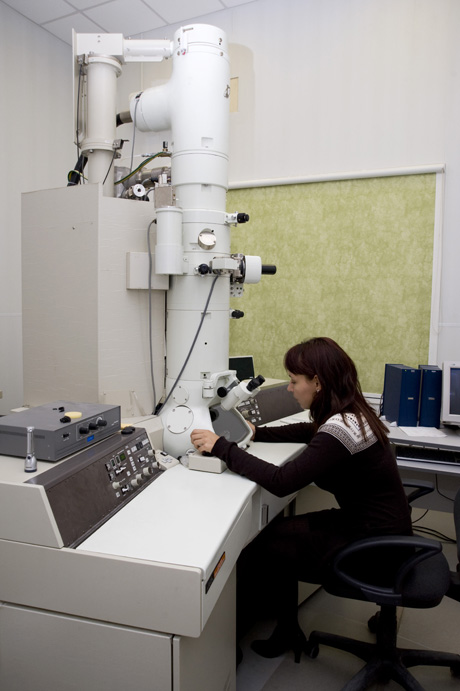
|
|
Studies of structural and elemental composition of substances by methods of electronic microscopy, optical spectroscopy and X-ray diffraction. Section Head:Dr. B. Kulnitskiy Staff:
|
||
Types and ranges of measurements: |
|||
Electron Microscopy |
|||
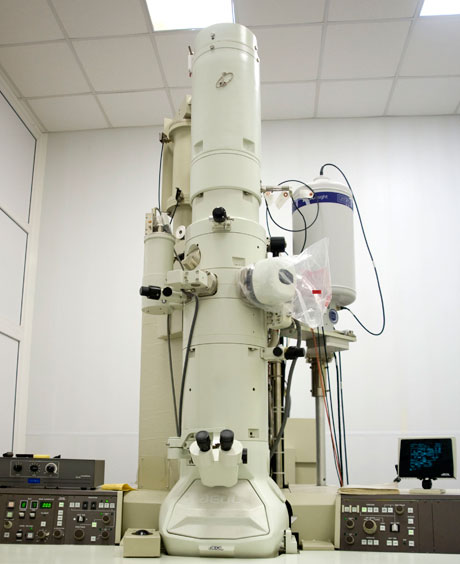
|
JEM-2010 Transmission Electron Microscope Accelerating voltage of 200 kV. Lines resolution - 0.14 nanometers. Equipped with energy-dispersive spectroscopy attachment, that works with characteristic X-rays, and provides elemental analysis, starting from the fourth element of the periodic table (Beryllium). Sample requirements:
|
||
| |
|||
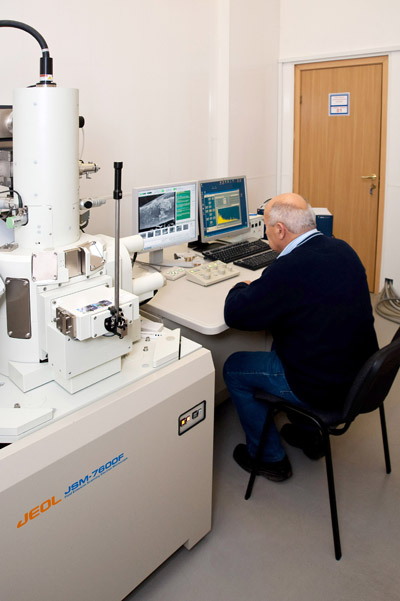
|
JSM-7600F Scanning Electron Microscope Analytical Scanning Electron Microscope with thermal-field emission.
Equipped with a spectrometer for energy-dispersive and fluorescence analysis, starting from the fourth element of the periodic table (Beryllium). Sample requirements:Diameter up to 26 mm, height up to 5 mm. Availability of a soft beam mode (100 B), allows studying a non-conductive objects without applying a conductive coating. |
||
X-ray Diffractometry and Topography |
|||
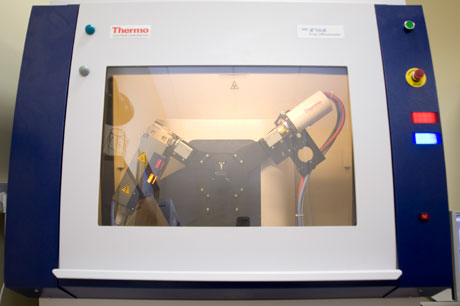
|
Diffractometry: ARL X'TRA TETA Powder Diffractometer equipped with Peltier detector to study the structure of polycrystalline samples ARL X'TRA System works in angular range 2θ, from -8° to 160°. System is equipped with a digital servo of high-resolution with optical decoder (accuracy of the decoder is ± 0,00025 degrees). The device is equipped with Soller collimating slits 1,15° and flexible system of slits (continuously adjustable by micrometer in the range of 0 - 10 mm) for reflected radiation. The Cu X-ray tube with a maximum capacity of 2000 watts is used as an X-ray source. |
||
| |
|||
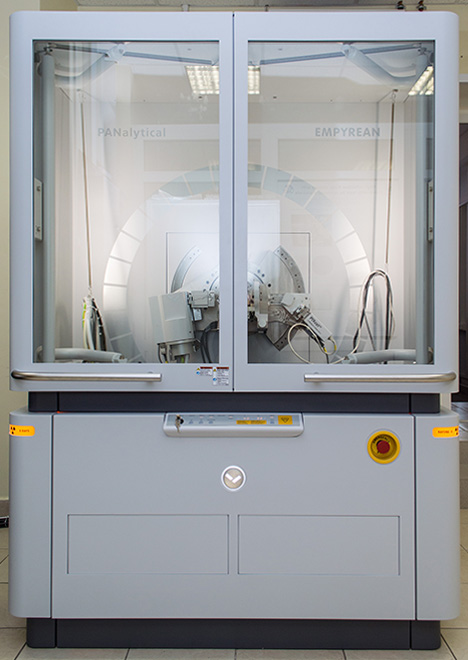
|
Empyrean – multipurpose X-ray diffractometer Empyrean - multipurpose X-ray diffractometer, designed to study polycrystalline materials and perfect single crystals. This diffractometer is equipped with modern X-ray optical modules and high sensitive 2D semiconductor detector PIXel 3D. This allows releasing practically all methods of X-ray diffraction analysis, including X-ray tomography. |
||
| |
|||
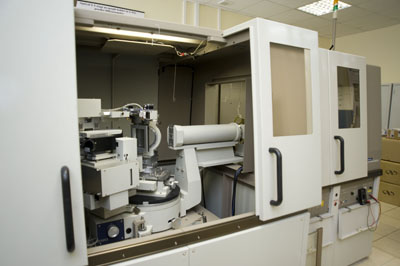 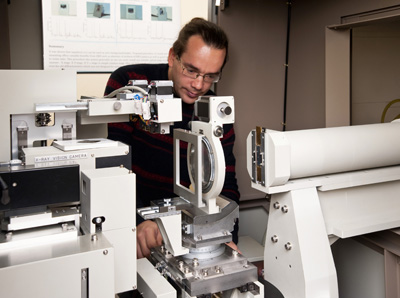
|
X-Ray topography: Rigaku XRT-100CCM – an X-ray Diffraction Topography System with a Crystal Monochromator The system can be used for non-destructive control of crystals structural perfection with a possibility of observation of linear and planar defects (such as dislocations and stacking faults) in the single-crystals lattice. X-ray diffraction methods used in this system are following:
Samples must be presented as single crystal or block plates with diameter less than 100 mm. Samples thickness for through-transmission survey can’t exceed primary extinction distance for the specific target material. |
||
Optical Spectroscopy |
|||

|
Spectroscopy of vibration transitions: Raman scattering (RS). Spectroscopy of electronic transitions: Photoluminescence. Lasers for Raman spectra excitation and for photoluminescence with wavelengths of: 244, 257, 458, 488, 514, 568, 633 and 647 nm. Temperature range of measurements: 4,5 - 800 K for Raman spectroscopy and photoluminescence. |
||
| |
|||
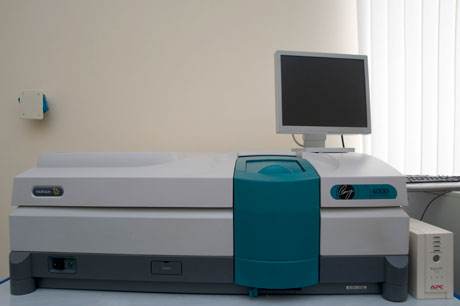
|
Cary 4000 Spectrophotometer
|
||
| |
|||
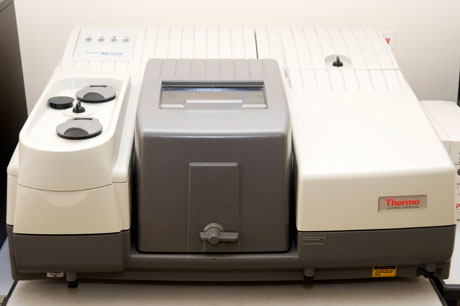
|
Thermo Nicolet Nexus 470 FTIR - IR- Fourier Spectrometer
|
||
| |
|||
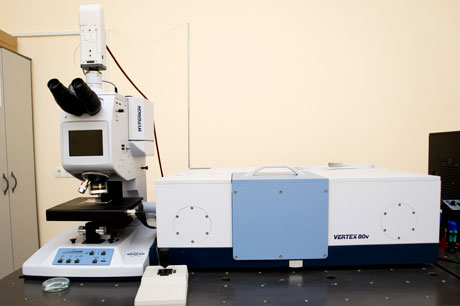
|
VERTEX 80v Vacuum Fourier spectrometer featuring HYPERION2000 IR-microscope, cryostat from 80 K and various add-on devices
|
||
| |
|||
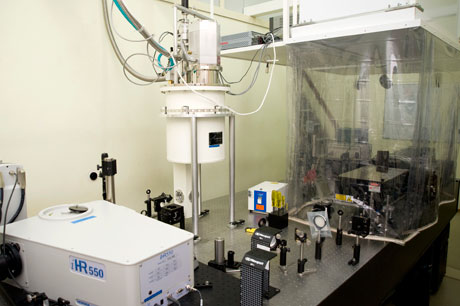
|
All-wave Raman Single Crystals Spectroscopy Complex An integrated optical system for optical spectroscopic studies in the temperature range from 5 to 800 K. |
||
| |
|||
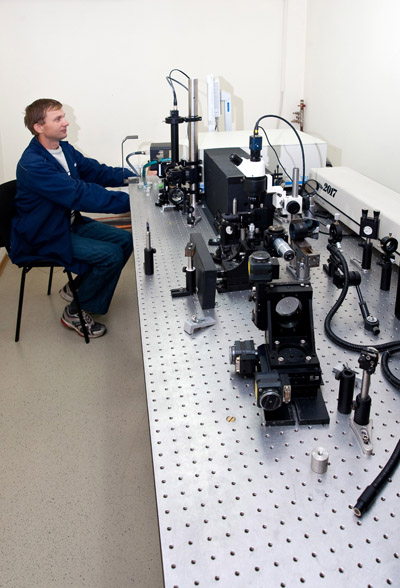
|
TRIAX-552 and iHR550 Spectrometers
(with low-temperature CCD, mirror optics and filters for suppressing laser radiation) equipped with microscopic attachments and diamond anvils
|
||
Sample requirements: Samples for IR-measurements must either be milled into a powder with a particle size of up to 2 microns, or have polished surfaces. When study films in transparency, substrate must be made of IR radiation transmissive material. When study nanostructural powders with Raman method, careful chemical cleaning of luminescent impurities or using clean materials for preparation of these powders, are required. |
|||